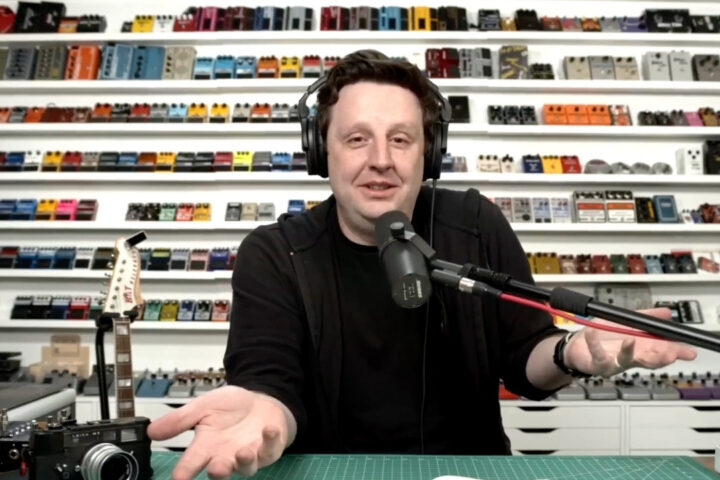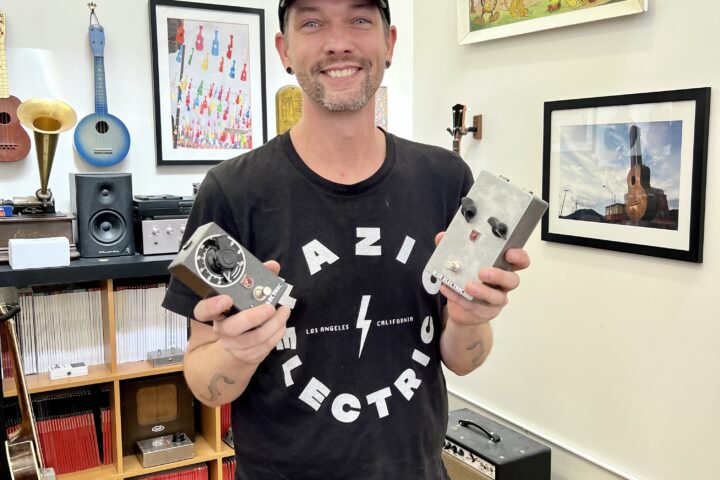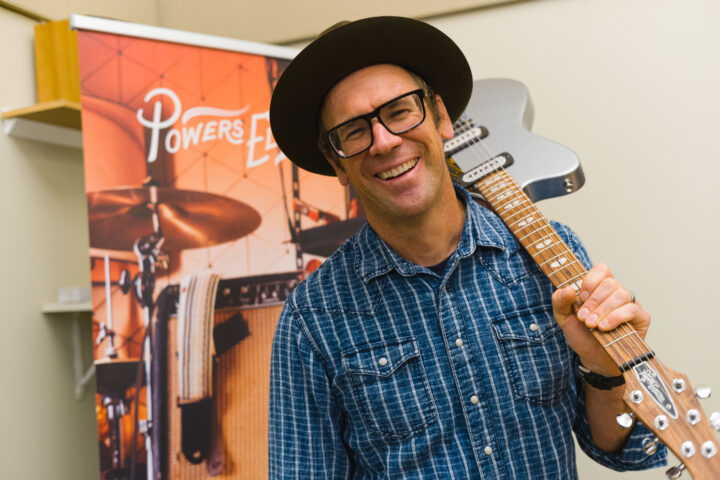Have we talked about the odd duality of guitarists’ tendencies yet? I seem to think we have… Ah yes, in the context of strings! In that case, it was the Old School vs. Latest Innovation dichotomy, but it affects us in other ways, too. At the moment, I’m thinking about the “Less Is More vs. Too Much Is Never Enough” thing. There are those of us who adhere strictly to the KISS (Keep It Simple, Stupid) school of gear, and there those who indulge in GATBWM (Give Me All The Bells & Whistles, Mother&#$%er). I’ve slowly made my way over to the Less Is More camp over the years, and I seem to have found myself with more less than most – my favorite guitars have one pickup and one knob (Volume) and even though my living room rig consists of two amps, they have three knobs between them (none of which I ever touch). Meanwhile, I’ve got a bazillion pedals, but all the fancy-pants ones have fallen by the wayside as I’ve made it a mission to spend more time playing and less time fiddling, and I’ve got a feeling I’m not alone.
With that in mind, I figured it was time for a sporadic series of Hands On columns looking at pedals with one knob. There are, needless to say, a shit-ton of ‘em out there, everything from loopers to reverbs to phase shifters. Some of ‘em cheat a bit (think the switch for different types of reverb on an Electro-Harmonix Holy Grail Nano or Neo) and some of ‘em cheat a lot (think the downloadable “Tone Print” settings on a TC Electronic HOF mini). For our purposes, we’re going to be absolutists about this thing: one knob, one switch, no monkey business. And to get things going, we’re going to take a look at the simplest yet one of the most useful pedals you can have: the boost pedal.
One-knob boost pedals are myriad, of course, and they go way back. The very first pedal I ever got was an Electro-Harmonix Linear Power Booster 2 that turned my Fender Champ into a veritable Scream Machine (and, technically, had two switches, both of which were, paradoxically, “on/off”). Other classic examples include MXR’s Micro Amp and, jumping forward in time a bit, Robert Keeley’s Katana Boost (NOTE: we’re not talking treble boosters here; they’re altogether a different beast). Needless to say, we cannot cover them all, but we rounded up four popular “boutique” boost pedals and put them through their paces. This batch of One-Knob Wonders consists of, in no particular order: JHS Pedals’ Prestige, ZVEX’s Super Hard On (SHO), Union Tube & Transistor’s More, and Lovepedal’s Balance.
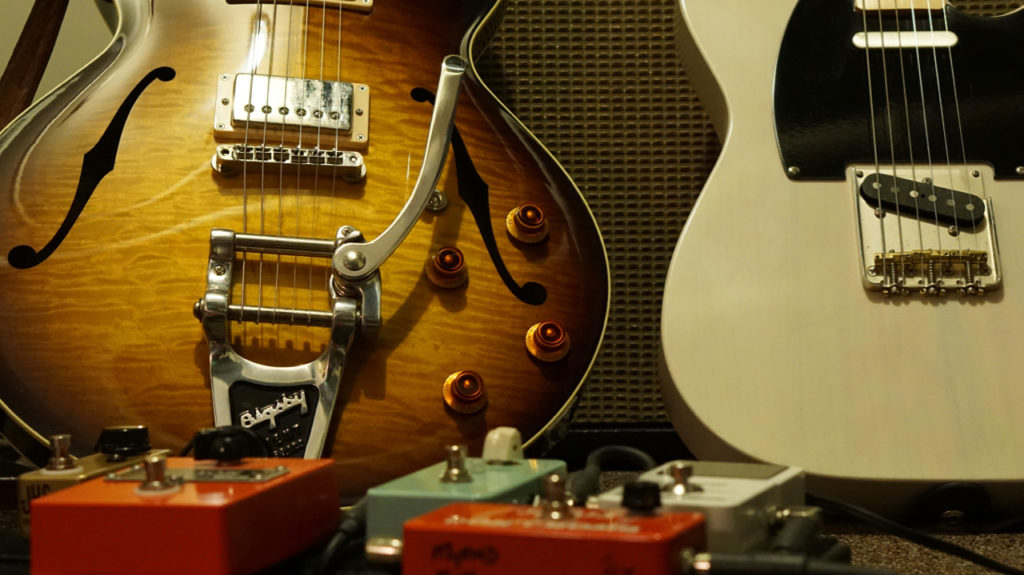
So, first things first, which in this case means: caveats. I don’t play like you (or, more to the point, you don’t play like me). Sure, I left the living room and its odd little amps to do my testing at my practice space with my most normal guitars (a Collings I-35 and a straight-up, blackguard Creston Telecaster, albeit made of butternut) through my most normal amp (a ’66 Vibrolux Reverb), but, as they say, your mileage may vary. Also, it seems that Union and Lovepedal call their respective pedals “preamps” rather than boosts, but that’s a nit I’ve chosen to leave unpicked for our purposes. A boost by any other name, et cetera and so on.
Let’s break ‘em down, one by one:
JHS Pedals Prestige (Retail: $129, limited edition hand-painted versions are $164)
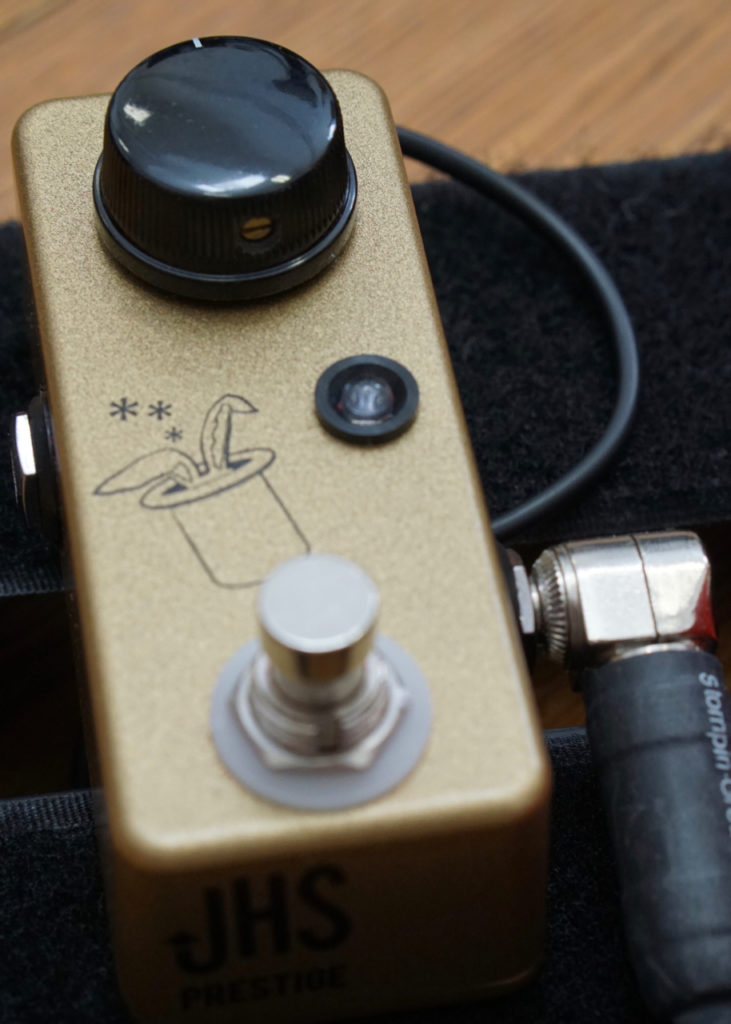
The Prestige is a nifty little box, accent on “little,” inasmuch as it is the only pedal in our group with the hip new “mini” footprint (the SHO has a variant in this smaller size, but it has two knobs). It has a great big knob, though, and a bright blue light, and a snazzy gold finish. As JHS tells it, it is a buffer, a boost and a “tone enhancer,” and I wouldn’t argue with that. From unity through the gain range the pedal goes from being a simple buffer and boost to a smooth and rich overdrive and, really, you could say anywhere you set it your tone’s “enhanced.” It plays nice with humbuckers and single coils, breaking up sooner with the former. Tone-wise it seems a little strong in the midrange for my ears, but that’s a large part of its smoothness. In spite of its small size it seems quite rugged, a step up from some other “mini” pedals I’ve encountered.
ZVEX Super Hard On (Retail: $259 hand-painted, $189 Vexter)
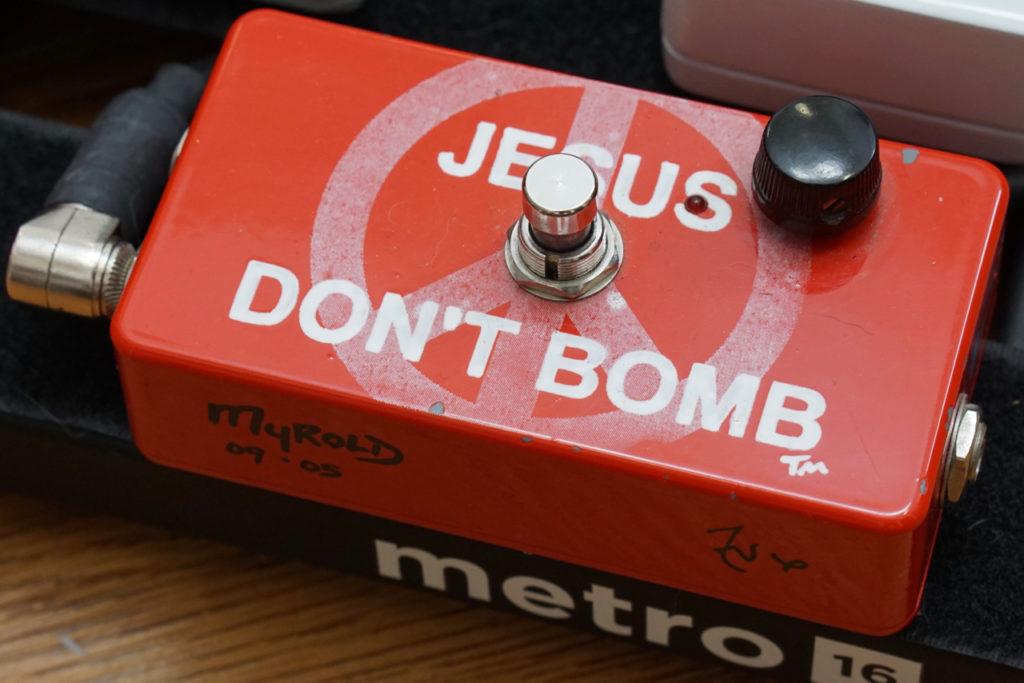
Don’t let the photo fool you – this particular SHO is a limited edition allegedly built for worship musicians who felt uncomfortable with the SHO’s double entendre. The SHO is available in ZVEX’s hand-painted and Vexter editions (which share the same internals). Zack calls the SHO an “ultra-transparent boost” and, again, who am I to argue? Its one knob “is a negative-feedback control styled after classic 60’s recording console inputs” “that goes from unity gain to a whooping 60 times the original size.” I’m not sure that my ears can do that math, but it does get pretty freakin’ loud. Functionally, it was the cleanest boost of the group. It can push my smaller amps to break up but the Vibrolux didn’t get particularly dirty until its own volume was pushed near the edge of breaking up. Tonally, it adds a bit of top-end clarity, but there also seems to be some added definition in the low end, particularly with humbuckers. It’s worth noting that its “landscape” orientation doesn’t always play nice with pedal board layouts, and it’s sold “battery only,” though one can purchase a replacement bottom plate for connecting an external power supply. Battery life is more or less epic – they last a long, long time.
Union Tube & Transistor More (Retail: $295)
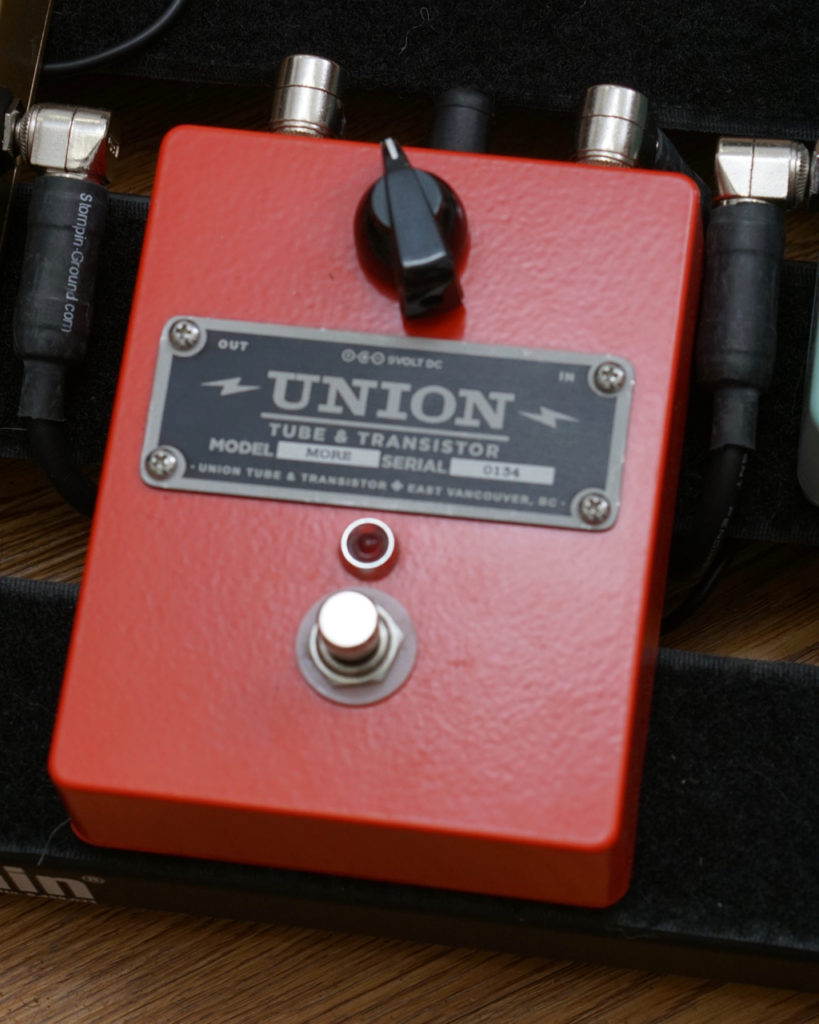
“More” indeed. Union says that the More provides “+5db up to +40db of clean gain,” but in my testing it got pretty hairy, pretty fast with both the small amps and the Vibrolux. Things stay clean up until around 11 o’clock then get progressively gnarlier. Through all of its settings, the More tended to fatten things up quite a bit; once it got past noon the breakup had some top-end on it, somewhere between what you might associate with a brownface and a tweed Fender. It interacts very well with the guitar’s volume knob, though – I was very happy with the More set between 2 and 3 o’clock and my guitar volume pulled back about 10-20%, which seemed to tame the low end while leaving a bit of hair on it, giving me the clarity I craved, with a nice edge. In general I got the feeling that this pedal would be much happier if I were an AC-30 guy rather than a Fender guy. I think this is one of those “it’s not you, it’s me” situations. The More seems a bit bigger than a one-knob preamp/boost needs to be, but it’s solid and undeniably sexy, eschewing painted graphics for a screwed-on metal tab.
Lovepedal Balance (Limited Edition, currently unavailable, used versions run ~$140 – $160)
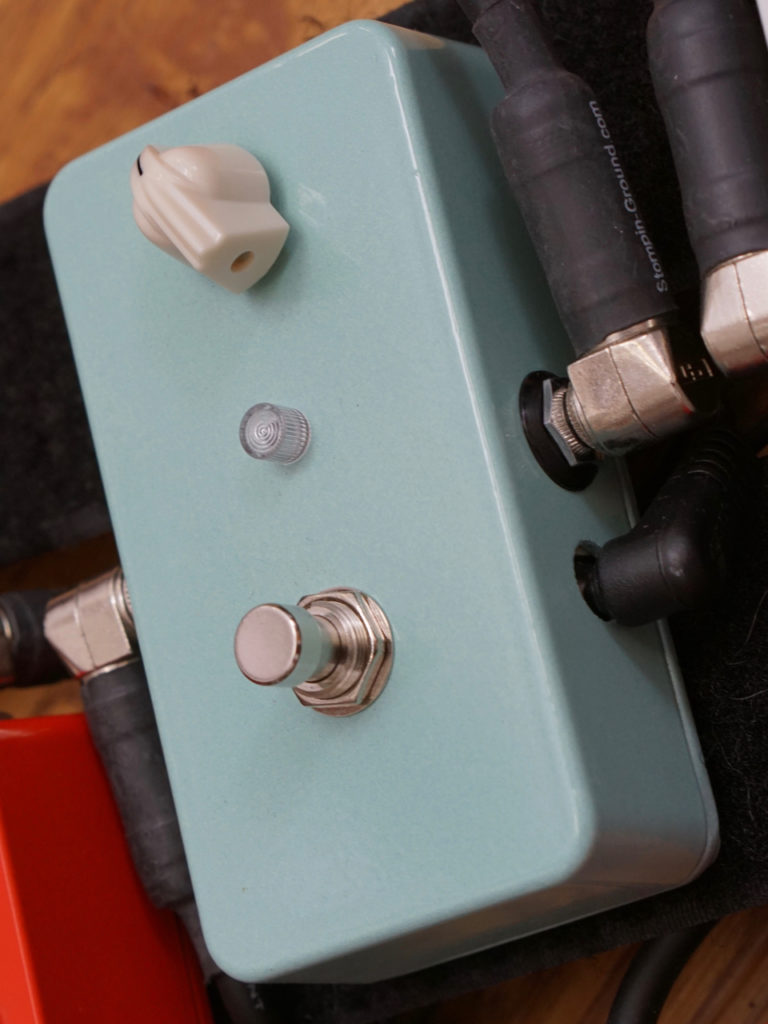
It’s probably unfair to include this particular pedal, but there it is, and it’s fairly representative of the one-knob boosts/preamps/overdrives that Lovepedal offers now and again. It behaves much like the other pedals, adding a little boost and life at its lowest settings, but it starts to break things up earlier, not much past 9:00 in my experience. It tends a little darker, like the More, but its hair is considerably more in the Fender tweed vein of things.
So… I’m old. I love dirt, and I’ve got more than a dozen overdrive and fuzz pedals to prove it, but by and large I’m playing clean and I want a clean boost that’s going to make my clean sound better, louder, or both. Consequently, the ZVEX SHO is the only pedal that’s always on my board. The Balance, More and Prestige certainly have their uses, and in the right mood they can definitely hit the spot, but always next to, not instead of my SHO, and, thinking about it, those are spots I tend to hit with an overdrive or fuzz pedal – most of mine clean up very nicely when I back off on the guitar’s volume, and one of ‘em, a Lovepedal COT50 “Lil China” that’s usually on my “big” board, even meets the one-knob criterion…
[Editor’s note: Got a favorite single-knobbed pedal? Let us know!]
